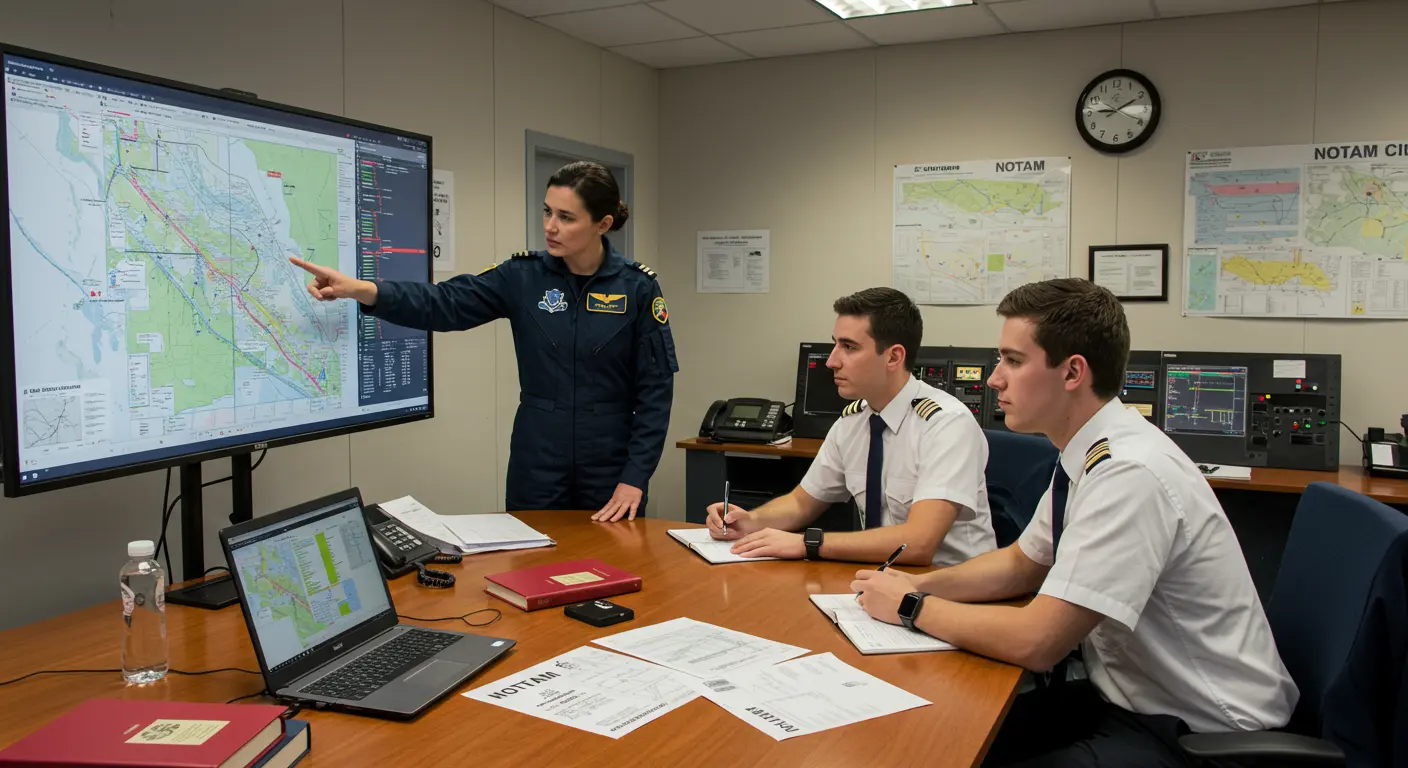Types of NOTAMs – A Comprehensive Guide
Understanding Notums – What You Need to Know
A NOTAM (Notice to Air Missions) serves as a time-sensitive alert for flight personnel, highlighting hazards or changes within the National Airspace System (NAS). Think of it as a crucial bridge—spanning the gap between published charts and real-time conditions, addressing issues that emerge too suddenly for inclusion in standard publications.
For aviation professionals, Notums represent far more than routine notifications. They’re a critical safety mechanism, essential for maintaining situational awareness in our dynamic airspace environment. Mastering the various NOTAM types and their interpretation forms the foundation of to safe flight operations and strategic flight planning.
Different Types of Notums – Categories Explained
Notums are systematically categorized, enabling aviation professionals to swiftly identify and prioritize the information most relevant to their operations.
Notums are classified by their function:
-
New (N): Introduces fresh information.
-
Cancel (C): Terminates an existing notice.
-
Replace ®: Updates a previously issued NOTAM.
Beyond function, Notums are further categorized into types such as:
-
Class I & II: Distributed internationally or locally, respectively.
-
International & Domestic: Affecting international or national airspace.
-
Civil & Military: For civilian or military operations.
-
Published: Incorporated into flight information publications.
-
FDC (Flight Data Center): Regulatory in nature.
For practical flight planning, pilots typically focus on three main categories:
-
NOTAM (D): Distant notices for airports and navigation facilities.
-
FDC Notums: Regulatory notices concerning airspace, procedures, or charts.
-
Special Activity Airspace (SAA) Notums: Information on restricted airspace activation.
The military’s local NOTAM (L) has been largely phased out in civilian aviation.
NOTAM (D) – Essential Updates for Pilots
NOTAM (D), where ‘D’ stands for ‘distant,’ represents one of the most frequently encountered notice types during flight planning. These Notums deliver operation-critical information originating beyond a local flight service station’s coverage area.
NOTAM (D)s encompass an extensive range of vital information:
The NOTAM (D) category includes two subclassifications:
-
(U) Notums: Contain unverified information that should be approached with caution.
-
(O) Notums: Contain operationally significant information that may not meet standard NOTAM criteria.
Reviewing these notices during preflight planning is essential safety protocol for all aviators. Why? These notices can dramatically impact both VFR and IFR operations.
FDC Notums – Regulatory Changes and Procedures
Flight Data Center (FDC) Notums constitute a distinct and exceptionally important category of notices that carry genuine regulatory authority. The key difference is that while standard Notums primarily inform pilots about conditions, FDC Notums often contain information that pilots are legally obligated to follow during their operations.
Issued by the FAA’s Flight Data Center, these notices address regulatory changes to:
-
Instrument approach procedures
-
Airways and aeronautical charts
-
Other elements of the National Airspace System
A particularly significant type of FDC NOTAM establishes Temporary Flight Restrictions (TFRs). These notices temporarily prohibit aircraft operations within designated areas due to hazardous conditions, special events, presidential movements, security concerns, or other circumstances demanding enhanced airspace protection.
For instrument-rated pilots, these Notums are essential. They may contain updates to procedures not yet reflected on published charts, such as changes to minimum altitudes, approach courses, or missed approach procedures.
Special Activity Airspace Notums – What to Know
Special Activity Airspace (SAA) Notums provide important information about the activation and use of designated airspace areas that may restrict or significantly impact normal flight operations. These notices are essential for pilots planning routes that might traverse or approach these specialized airspace segments.
SAA Notums announce when special airspace will be active outside its published schedule, allowing pilots to plan alternate routes in advance.
SAA Notums may be accompanied by Pointer Notums to emphasize key details. Pilots should check both published schedules and any modifying Notums to avoid airspace violations or potentially hazardous encounters.
How to Read and Interpret Notums
Each NOTAM adheres to a structured format that encompasses:
Notums employ a specialized language of abbreviations and codes to convey information concisely—RWY (runway), SVC (service), NAV (navigation), and OUST (obstruction), to name a few. While these abbreviations can make Notums appear cryptic to newcomers, they enable experienced pilots to rapidly scan and comprehend substantial volumes of information during flight planning.
When interpreting Notums, pilots should identify notices affecting their departure airport, planned route, and destination. Priority must be given to Notums that might compromise the safety or legality of the flight—runway closures, navigation aid outages, or airspace restrictions demand immediate attention.
Modern flight planning software and services have improved NOTAM presentation, often categorizing and filtering notices by relevance while presenting them in plain language. However, pilots must maintain proficiency in reading raw NOTAM text—this skill remains indispensable when using official sources or when electronic tools become unavailable.
Challenges with Notums – Common Issues
Despite their critical importance, the NOTAM system presents several persistent challenges:
Conclusion – The Importance of Notums in Aviation
Notums function as a vital communication lifeline throughout the aviation industry, delivering time-sensitive information that directly influences flight safety and operational efficiency. They provide the critical connection between published aeronautical information and real-time conditions that pilots and aviation personnel require for informed decision-making.
While challenges remain with readability and information overload, these notices remain an indispensable tool for risk management and situational awareness.
As aviation continues to evolve, the NOTAM system will undoubtedly be refined and enhanced. Yet its fundamental purpose remains steadfast: to provide timely, accurate information that protects aircraft, crews, and the public we serve.







